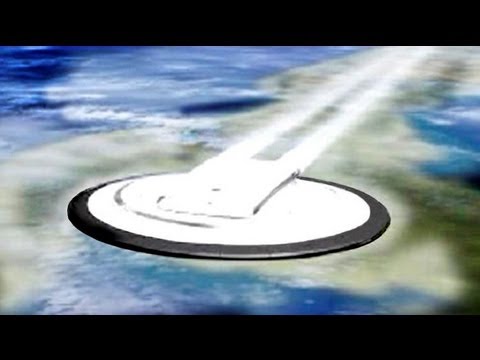Apollo 1’s Fatal Fire Almost Ended the Spaceflight Program | Apollo
Going to space was always a risk,but in the beginning of the Apollo Program, the UnitedStates got a stark realization of just howdangerous its moon missions would be. The Apollo Program almost ended before iteven got off the ground. In the mid 1960s, NASA was working at breakneckspeed, attempting to take another step towardsPresident John F. Kennedy’s goal to landa man on the moon by the end of the decade. Apollo Program engineers were still focusedon fulfilling the foundation for the project’sobjectives: Establishing the technology tomeet other national interests in space; Achievingpreeminence in space for the U. S. ; Carryingout a program of scientific exploration ofthe Moon; And developing man’s capabilityto work in the lunar environment. By 1966, NASA upgraded its first multistagerocket, the Saturn I, to the more powerful Saturn IB. The top part of the rocket was where severalmajor systems lived including the Apollo spacecraft- known as the Command-Service Module or CSM. The command module was considered the mothership, with the goal of carrying the astronautsto space and then returning them safely to Earth. Inside were three compartments, includingthe sealed crew cabin, which only had aboutsix cubic meters of space. With all the operational displays, crew couchesand equipment, there was very little roomleft over for the astronauts to maneuver. A prototype version of the spacecraft, theApollo Block I CSM, would be the first toembark on a manned mission. NASA set the launch date for February 21,1967. The purpose of the flight was to test launchoperations, ground tracking and control facilities,and the performance of the Saturn IB rocketand the CSM spacecraft. NASA selected two veterans and one rookieas the crew for the mission that was laterdubbed Apollo 1. The command pilot, Gus Grissom, was no strangerto the stress of space flight. Grissom was one of the original Mercury pilots,and during the splashdown of his first mission,the capsule’s hatch blew open, causing himto nearly drown. The senior pilot was Ed White who was thefirst American to conduct a space walk duringProject Gemini. And the pilot was Roger Chaffee who at 31would be theyoungest American ever to go to space. He was added the crew as a replacement afterthe original pilotdislocated his shoulder during training. Chaffee was known as a notoriously nice guywho was often teased by other astronauts forhis admiration of Grissom and White. He saw the Apollo 1 mission as a way to provehimself worthy of the title of astronaut. Early on in their training, Grissom and therest of the crew voiced concerns with thespacecraft – primarily with the amount offlammable material in the cabin. The astronauts jokingly presented this crewportrait to the Apollo Spacecraft ProgramOffice manager after he gave the spacecrafta passing grade. But the thing is, the astronauts weren’talone in their concerns. In fact, some experts believed the immensepressure of Kennedy’s deadline forced NASAand the contractor, North American Aviation,to make decisions that sacrificed safety. One of the main concerns was NASA’s decisionto opt for a single gas environment insidethe capsule over a dual gas environment becauseit required a lighter system. This meant that the Apollo spacecraft woulduse 100% oxygen in the crew cabin, so evena small spark could quickly turn into a blaze. Adding to that fear, other astronauts reportedseeing what appeared to be frayed wires andshort circuits in the cabin of the spacecraft. There were also issues with the decision tohave the hatch open inward and the fact thatit did not carry explosive bolts in case ofan emergency. NASA and North American Aviation made as manyadjustments as possible. But in the interest of time, they decidedto move forward with the February flight. One month before launch, the rocket and spacecraftwere cleared for what was referred to as a “plugs out test”. At 1pm on January 27th, the Apollo 1 astronautsentered the command module, sealed the hatchand prepared for what was considered a sortof dress rehearsal for the actual flight. There were problems from the start. First, there was a foul odor emanating fromthe oxygen tank;and then there was an alarm triggered, indicatinga high oxygen flow;To the frustration of the crew, static continuallydrowned communication with the control room. At 6:31pm the test conductors were ready tostart the countdown. . . seconds later horror struck. A flash fire ripped through the spacecraft. The emergency escape procedure called fora minimum of 90 seconds, but it only tookabout 30 seconds for flames and toxic smoketo engulf the crew cabin. Despite heroic efforts by NASA ground crewsand controllers, it took a full five minutesto open the hatch. The deaths of Grissom, White and Chaffee werea shocking wake up call that caused many toquestion President Kennedy’s deadline toput a man on the moon. All the progress NASA had made was blindedby tragedy. The investigation of the Apollo 1 fire forceda hold on the space program. The hard lessons learned from this missionwould dictate new stringent checks and balancesthat would inform all NASA missions to follow,ultimately changing the nation’s path to the moon. There’s a lot of history that led up tothis point, so if you want to learn more aboutthe start of the space race and NASA’s firstmissions, check out this video. And make sure you subscribe to Seeker to followthe entire Apollo series. Thanks for watching!













